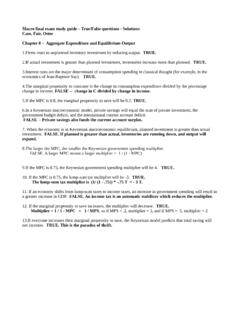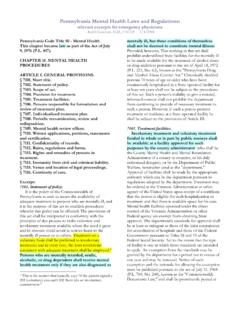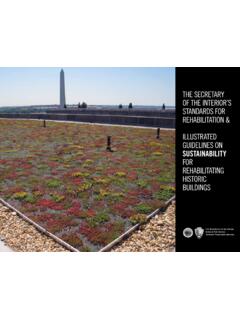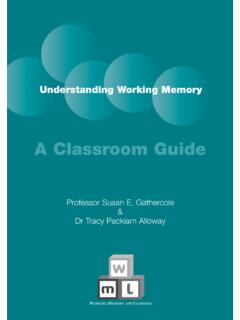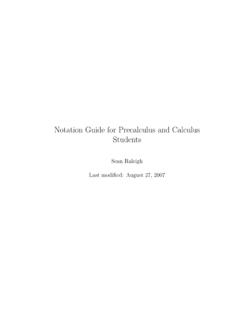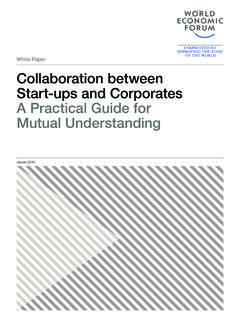Transcription of Understanding Relative Risk, Odds Ratio, and Related Terms ...
1 2015 COPYRIGHT PHYSICIANS POSTGRADUATE PRESS, INC. NOT FOR DISTRIBUTION, DISPLAY, OR COMMERCIAL PURPOSES. 2015 COPYRIGHT PHYSICIANS POSTGRADUATE PRESS, INC. NOT FOR DISTRIBUTION, DISPLAY, OR COMMERCIAL PURPOSES. e857J Clin Psychiatry 76:7, July 2015 Each month in his online column, Dr Andrade considers theoretical and practical ideas in clinical psychopharmacology with a view to update the knowledge and skills of medical practitioners who treat patients with psychiatric of Psychopharmacology, National Institute of Mental Health and Neurosciences, Bangalore, India Relative Risk, Odds Ratio, and Related Terms :As Simple as It Can GetChittaranjan Andrade, MDABSTRACTRisk, and Related measures of effect size (for categorical outcomes) such as Relative risks and odds ratios, are frequently presented in research articles.
2 Not all readers know how these statistics are derived and interpreted, nor are all readers aware of their strengths and limitations. This article examines several measures, including absolute risk, attributable risk, attributable risk percent, population attributable risk percent, Relative risk, odds, odds ratio, and others. The concept and method of calculation are explained for each of these in simple Terms and with the help of examples. The interpretation of each is presented in plain English rather than in technical language. Clinically useful notes are provided, wherever Clin Psychiatry 2015;76(7):e857 Copyright 2015 Physicians Postgraduate Press, research papers present findings as odds ratios (ORs) and Relative risks (RRs) as measures of effect size for categorical outcomes.
3 Whereas these and Related Terms have been well explained in many articles,1 5 this article presents a version, with examples, that is meant to be both simple and practical. Readers may note that the explanations and examples provided apply mostly to randomized controlled trials (RCTs), cohort studies, and case-control studies. Nevertheless, similar principles operate when these concepts are applied in epidemiologic research. Whereas the Terms may be applied slightly differently in different explanatory texts, the general principles are the SituationConsider a hypothetical RCT in which 76 depressed patients were randomly assigned to receive either venlafaxine (n = 40) or placebo (n = 36) for 8 weeks.
4 During the trial, new-onset sexual dysfunction was identified in 8 patients treated with venlafaxine and in 3 patients treated with placebo. These results are presented in Table 1. Using these data, we can calculate the values for a variety of Terms , as illustrated in the sections that RiskConcept. The absolute risk of an event is the likelihood of occurrence of that event in the population at The absolute risk of an event is estimated as the number of persons who actually experience the event divided by the total number of persons exposed to the risk of that event. This figure is usually expressed as a percentage, though it can also be expressed in other ways, such as per 1,000 or per 100,000 persons in the population at risk.
5 It can also be expressed in Terms of person-years of exposure to the risk example. Using the data in Table 1, because 40 patients took venlafaxine and because 8 of them developed sexual dysfunction, the absolute risk of sexual dysfunction with venlafaxine is 8/40, or Similarly, the absolute risk of developing sexual dysfunction with placebo is 3/36, or in plain English, of patients who receive venlafaxine (as administered in this trial) and of those who receive placebo (as administered in this trial) can expect to experience new-onset sexual dysfunction during the first 8 weeks of treatment. Presumably, sexual dysfunction resulting from venlafaxine treatment involves specific drug- Related mechanisms, whereas sexual dysfunction with placebo involves nocebo mechanisms, illness- Related factors, or other Risk or Risk DifferenceConcept.
6 The attributable risk is the risk of an event that is specifically due to the risk factor of work may not be copied, distributed, displayed, published, reproduced, transmitted, modified, posted, sold, licensed, or used for commercial purposes. By downloading this file, you are agreeing to the publisher s Terms & Conditions. 2015 COPYRIGHT PHYSICIANS POSTGRADUATE PRESS, INC. NOT FOR DISTRIBUTION, DISPLAY, OR COMMERCIAL PURPOSES. 2015 COPYRIGHT PHYSICIANS POSTGRADUATE PRESS, INC. NOT FOR DISTRIBUTION, DISPLAY, OR COMMERCIAL PURPOSES. e858 J Clin Psychiatry 76:7, July 2015 Chittaranjan AndradeTable 1. Hypothetical Results of an 8-Week Randomized Controlled Trial of Venlafaxine (n = 40) vs Placebo (n = 36)Developed Sexual DysfunctionDid Not Develop Sexual DysfunctionTotalReceived venlafaxine 83240 Received placebo 33336 Total116576 Calculation.
7 It is estimated as the difference in the absolute risk (of the event of interest) between persons exposed to the risk factor and persons not exposed to the risk factor. It is usually expressed as a example. Using the data in Table 1, the risk of sexual dysfunction attributable specifically to venlafaxine is the absolute risk of sexual dysfunction with venlafaxine minus that with placebo; that is, , or in plain English, 20% of patients who receive venlafaxine (as administered in this trial) can expect to develop sexual dysfunction. However, in only of the patients is the adverse event specifically attributable to venlafaxine; in the remaining , other causes are probably responsible (eg, nocebo mechanisms, illness- Related factors).
8 Clinical note. The reciprocal of the attributable risk yields the number-needed-to-treat/harm Risk PercentConcept. The attributable risk percent is the percentage of cases (in whom the event of interest occurs) in the population at risk (ie, persons exposed to the risk factor of interest) that is specifically attributable to the risk factor of interest. This statistic is not commonly used in the context of RCTs; however, it assumes importance in epidemiologic studies and in public health It is estimated as the attributable risk divided by the absolute risk, converted to a example. In the previous section, we observed that out of the overall risk (of sexual dysfunction with venlafaxine) is specifically attributable to venlafaxine.
9 So, the attributable risk percent for venlafaxine is ( ) 100; that is, in plain English, whatever the actual number of cases of sexual dysfunction detected with venlafaxine in the population, only of this number would have sexual dysfunction that is specifically due to venlafaxine; in the remaining cases ( ), other explanations are likely (eg, nocebo mechanisms, illness- Related factors).Population Attributable Risk PercentConcept. The population attributable risk percent is the percentage of cases (in whom the event of interest occurs) in the general population (that is, regardless of exposure to the risk factor of interest) that is specifically attributable to the risk factor of interest. Otherwise expressed, it is the percentage of cases that would be eliminated from the general population were the risk factor to be statistic is not used in the context of RCTs; however, it assumes importance in epidemiologic studies and other population-based studies.
10 The statistic is of particular interest to persons involved in planning and public It is estimated as the attributable risk multiplied by the prevalence of the risk factor in the population; the result is expressed as a example. Suppose that of the population uses venlafaxine. In an earlier section, we estimated that the risk of sexual dysfunction specifically attributable to venlafaxine was Therefore, of of the population will experience sexual dysfunction specifically attributable to venlafaxine. This is calculated as ; expressed as a percentage, the value is nearly in plain English, of the general population is likely to suffer from venlafaxine- Related sexual dysfunction.
